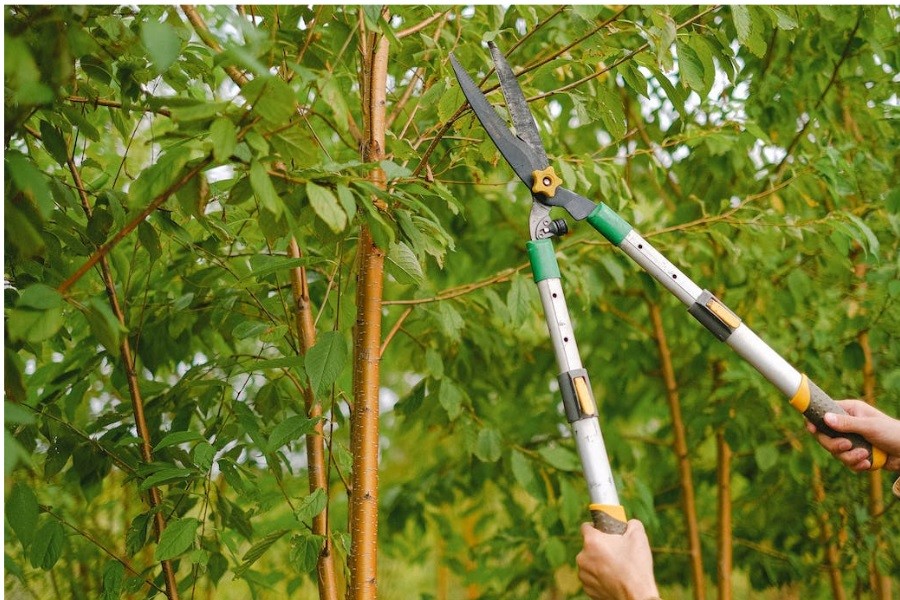
Trees provide a wealth of benefits to our environment and communities. They improve air quality, reduce noise pollution, and offer shade and beauty.
However, trees are also living organisms that require care and attention to thrive. Regular tree inspections are essential in identifying and addressing issues early on, which can save money and resources while promoting the health and longevity of trees.
Benefits of Regular Tree Inspections
Regular tree inspections have many benefits, including identifying issues early on. The earlier problems are identified, the easier and more cost-effective they are to address. For example, if a tree has a disease that isn’t caught early, it may require removal, which can be expensive and time-consuming. This is where tree services come in. Regular inspections by a professional tree service can ensure that any issues with your trees are identified and addressed promptly, promoting the health and longevity of your trees. This also prevents the need for costly solutions down the line.
Regular tree inspections can also help save money and resources. Trees are an investment, and as such, they require regular maintenance to remain healthy and beautiful. Catching issues early on can prevent the need for extensive repairs or even replacement. Additionally, healthy trees provide numerous benefits, such as shade and improved air quality, so maintaining them is well worth the effort.
Keeping trees healthy and looking their best is another important benefit of regular tree inspections. Trees are an essential part of any landscape and add to the overall aesthetic. Inspecting trees regularly ensures that they receive proper care, such as pruning, fertilization, and pest control, to stay healthy and vibrant.
Regular tree inspections can also help avoid potential safety hazards. Trees that are diseased or damaged can pose a significant risk to people and property. If a branch falls or a tree topples over, it could cause serious injury or damage. By inspecting trees regularly, any potential safety hazards can be addressed before they become a problem.
Types of Issues to Look for During Tree Inspections
There are various types of issues that you should look for during tree inspections. These issues include disease, pest infestations, structural problems, and environmental stressors.
Diseases are common issues among trees and can be caused by bacteria, fungi, or viruses. Some of the signs of disease include premature leaf drop, discoloration, and stunted growth. If you notice any signs of disease, it’s essential to take action immediately to prevent the spread of the infection.
Pest infestations are another common issue that can cause significant damage to trees. There are many types of pests that can infest trees, such as beetles and caterpillars. The signs of pest infestations often include holes in leaves, sawdust around the base of the tree, and discolored or wilting leaves. Treating pest infestations promptly can prevent the loss of the tree.
Structural problems can also occur in trees, such as cracks or splits in the trunk or branches. These issues can weaken the tree, making it more susceptible to damage from wind or other environmental factors. If you notice any structural problems, it’s essential to address them quickly to prevent further damage.
Finally, environmental stressors such as drought or extreme temperatures can also impact trees. Signs of stress can include wilting leaves, stunted growth, and premature leaf drop. Addressing these issues early on can help ensure that the tree remains healthy and vibrant.
How to Conduct a Tree Inspection
Conducting a tree inspection can be done either by hiring a professional arborist or by conducting a visual inspection yourself. Hiring a professional is often recommended, as they have the expertise and tools necessary to identify issues that may not be immediately visible. However, if you conduct the inspection yourself, there are a few things to remember.
Start by examining the trunk and branches of the tree for any signs of damage or disease. Look for cracks, splits, or wounds in the bark and dead or decaying branches. Next, examine the leaves for any discoloration or signs of pest infestations. Finally, check the soil around the tree’s base for any signs of stress, such as dry or compacted soil.
Advanced technology, such as aerial inspections, can also be used to conduct a more thorough inspection. Aerial inspections use drones or other equipment to get a bird’s eye view of the tree, allowing for a more comprehensive assessment of its health.
Addressing Issues Found During Tree Inspections
Addressing issues found during tree inspections will depend on the type of issue discovered. For example, if a tree has a disease, it may require treatment with fungicides or antibiotics. If the tree has structural problems, pruning or cabling may be necessary to provide support and prevent further damage.
In some cases, removing the tree may be the best solution. For example, if the tree is severely diseased or damaged, it may not be salvageable. Additionally, trees that pose a significant risk to safety may also need to be removed.
Preventing future issues from arising is another important consideration. Regular maintenance, such as pruning and fertilizing, can help keep trees healthy and prevent common issues. Also, proper planting and care practices, such as watering and mulching, can promote trees’ health and longevity.
Regular tree inspections are essential in identifying and addressing issues early on, which can save money and resources while promoting the health and longevity of trees. They provide a wealth of benefits to our environment and communities, including improving air quality, reducing noise pollution, and offering shade and beauty. By conducting regular tree inspections and addressing any issues promptly, we can ensure that our trees remain healthy, vibrant, and beautiful for generations to come. So, if you have trees on your property, be sure to schedule a regular inspection with a professional arborist or conduct a visual inspection yourself to keep them healthy and looking their best.
- LISC CEO Michael T. Pugh Recognized Among 2024 Worthy 100 Leaders
- NY Lawmakers Celebrate Historic MENA Data Recognition Bill Signed By Hochul
- Sponsored Love: Leadership Skills Training Courses: Invest In Your Future Today
- Senator Hoylman-Sigal Calls On Independent Schools To Adopt NYC Public School Calendar
- Mayor Adams Celebrates 65 Million NYC Visitors In 2024, Second-Highest Ever
Become a Harlem Insider!
By submitting this form, you are consenting to receive marketing emails from: . You can revoke your consent to receive emails at any time by using the SafeUnsubscribe® link, found at the bottom of every email. Emails are serviced by Constant Contact









